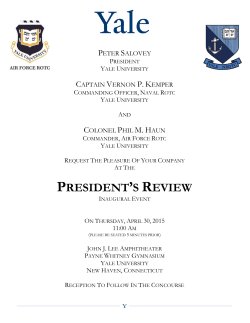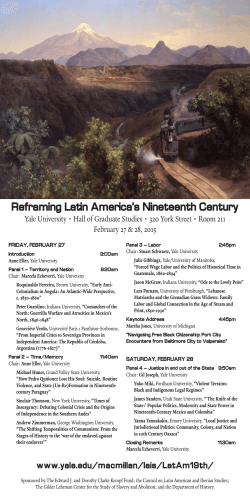
Facilities Operations Rates & Charging Methods
Facilities Central Operational Rates and Charging Methodology – FY13 & Base for FY14 Planning Questions – please contact John Kaufhold, Director of Finance & Administration – Facilities Rates: Physical Plant Custodial Services Grounds Maintenance Fire Code Compliance $87 $46 $62 $58 Rate Cost Components: Phys Plant Custodial Grounds Variable & Supervisory Costs: S&M Labor Rate (contract avg. actual hourly pay rate) S&M Fringe Benefits 55.5% (pension/401k, health, etc.) S&M Indirect (admin, sick, PTO, training, union, etc.) Total S&M Labor Cost per Billable Hour 35.06 19.46 10.91 65.43 20.17 11.19 5.19 36.55 27.16 15.07 7.43 49.66 Supervisors (M&P’s) and Support (C&T’s) Labor M&P and C&T Fringe Benefits of above Total Operational Cost per Billable Hour 6.97 2.02 74.42 4.63 1.34 42.52 3.59 1.04 54.29 Overhead/Equip/Vehicles/I&A/Phone Mgmt Assessments (AVP, BO, ITS, etc.) 5.79 6.79 1.67 1.81 4.10 3.61 Total Billable Rate per Hour 87.00 46.00 62.00 % of Total Rate 86% 92% 88% Fixed and Management Costs: 1 Services Included: Physical Plant • Electrical, plumbing, carpentry, mechanical, HVAC, painting, sheet metal, lock repair, roofing, masonry, etc. Grounds Maintenance • Landscaping maintenance, snow plowing, equipment & vehicle repair, trash & recycling collection/disposal. Fire Code Compliance • Fire extinguisher maintenance, building inspections, fire alarm service, fire drills, etc. Commonly Asked Questions: 1. Why are Facilities rates so much higher than the cost of outside contractors for comparable services (custodial, grounds, etc.)? • Yale University has embraced the concept of a “living wage” for all of its employees. As a result, the S&M and C&T union contracts reflect what the City of New Haven and the University believe to be the wage rate and benefit package that approximates the cost of living in this community. Outside contractors do not necessarily embrace this concept and in many cases pay their employees significantly less than what Yale offers and thus, they can offer similar services for a lower hourly rate. 2. Can Facilities provide examples of outside contractor rates for services performed by Facilities for comparison to Yale internal rates described above? • Yes, the information below was obtained during FY10; and adjusted for inflation by 3% to approximate FY13. Physical Plant: 1. Advanced Power Services, Inc. Mechanic Assistant to Mechanic 2. Buckingham Routh Mechanic Foreman 3. John Cohn & Son $97 $62 $92 $98 2 4. 5. 6. 7. 8. 9. Painter F.J. Dahill Painter Roofer Fallon Co. Carpenter/Painter/Mason CJ Fucci Construction Laborer Carpenter Equip Operator Little Inc. Mechanic/Plumber/HVAC Shoreline Metal Fabrication/ welding Schultz Electric Electrical Field Services Electrical Diagnostic Direct Labor/Electrician $63 $78 $78 $73 $90 $99 Note, the average of the Physical Plant rates for outside contractors listed is approximately $85, compared to Yale’s rate of $87. $128 $73 $93 $103 $83 Custodial Services: 1. ABM 2. Fusco 3. Orange $72 Custodian $19 Supervisory & Custodian OT $28 (Outsourced to ABM) N/a Custodian $17 Supervisory &Custodian OT $26 Grounds Maintenance: 1. ACA Landscaping Laborer Equip Operator 2. Craftsmen General Laborer Supervisor Custodial Cost Comparison - ABM vs. Yale $35 $63 $45 $65 Note, the average of the custodial and grounds rates for outside contractors listed here is lower than Yale’s rates by approximately 50% (custodial avg. of $23 versus Yale at $46). See further analysis below 88% of the difference is 3 direct labor cost. Delta ABM Custodial Avg. Contract Labor Rate $13.05 Fringe Benefits $ 1.56 Indirect time $ 1.60 Sub Total $16.21 Yale $20.17 $11.19 $ 5.19 $36.55 Supervisory, Overhead & Mgmt Profit (10%) Sub Total $ 4.49 $ 2.30 $ 6.79 $ 9.45 $ 0.00 $ 9.45 $ 2.66 Total $23.00 $46.00 $23.00 $20.34 3. Does Facilities use national standards when calculating how many custodians are needed to serve Yale building types and specific program requirements? • Yes, we use APPA standards (national standards for custodial services for educational institutions). APPA is the largest and most universally accepted source for custodial benchmarking. Facilities’ uses the Breeze software program to build custodial routines. For example, building specifics are entered into the software including building size, number of offices or labs for specific use, number of classrooms, size of class rooms, number of bathrooms, etc. The software, using APPA standards, calculates the number of hours needed to provide standard custodial services. These hours are used as the basis for our hiring needs, while taking into account the Local 35 contract for PTO, sick, union, administrative time, travel between buildings, etc. Additionally, actual time is recorded within the software for performance comparison to standard. • The software (based on FY13 square ft. of cleanable area for Central Campus) indicates that we should be staffed with 295 custodians; we currently have approximately 285 on staff. 4. What level of custodial service is the “Yale standard”? • Yale strives to achieve “Level 2” service. Custodial services are generally defined as the following: Level 1 - Orderly Spotlessness Level 2 - Orderly Tidiness (Yale service level) Level 3 - Casual Inattention Level 4 - Moderate Dinginess 4 Level 5 - Unkempt Neglect 5. Are there national standards for Physical Plant resource needs as well? • Yes, however, Physical Plant standards are not as universally accepted as the scope of requirements is not as “routine and predictable” as custodial services. As a result, every situation is compounded by building age, building complexity, age of systems, power source, HVAC heating system type, etc. However, IFMA’s Operations and Maintenance benchmark for Physical Plant employees indicates that Yale should have a minimum of 155 maintenance staff on site for square footage above 3 million. Yale currently has approximately 140 Central Physical Plant employees while the Central Campus serviceable square footage exceeds 5 million. In our opinion, this is one of the main contributors to the length of time it takes to complete “non emergency” repairs and maintenance with our service areas. 6. What is Facilities’ annual budget? • • • Central Facilities Operational budget is approximately $85 million (excludes YSM) Utilities budget (total campus) is approximately $115 million Capital Program budget varies by year but averages around $350 million 7. What additional overhead recovery methods are used by Facilities? a) Outside contractor costs include a 10% overhead recovery for Facilities costs related to overseeing their services, as well as well as business office, purchasing, contracting and compliance oversight, etc. b) Material costs (pipe, electrical sockets, etc.) include a 20% overhead recovery for Facilities costs related to the business office, purchasing services, inventory management, compliance oversight, etc. How much overhead is recovered on an annual basis from above, and can Facilities provide the cost pool information that supports the 10% & 20% recovery rates? Yes, we are developing that in support of our FY14 plan; however, here is a quick estimate. 1. Materials purchased in FY12 = approximately $5 million, recovery at 20% amounts to $1 million. 2. Outside contractor purchases in FY13 = approximately $22 million, recovery at 10% amounts to $2.2 million. Total overhead recovered is approximately $3.3 million 5 Cost Pool: a) Inventory Management and Facilities Purchasing wages and benefits = approximately $1.6 million b) Management/Overhead = $1.7 million There is a significant amount of coordination and oversight needed to manage outside contractor work (timing, access, movement of people, building shut downs, call before you dig, etc.) Total cost pool is approximately $3.3 million 8. Is it ok for my department/school/cost center to directly purchase facilities related outside contractors and/or materials, and therefore “bypass” the overhead recovery fees outlined in prior question? • No, the recently revised General Purchasing Policy #3201 specifically addresses this issue and now formally reflects the long standing requirement that all purchases for University owned properties (operations managed by Facilities) to be performed through Famis/Facilities Work Requests and/or performed by Facilities Management. This applies to all construction, renovation, maintenance and operation of the University’s buildings and grounds. The policy above was established not only for equal cost sharing, but also for risk avoidance. There have been numerous examples of departments directly contracting for building modifications that have resulted in the following problems: Modification was not in-line with Yale long range plan for space changes, occupant changes or purpose changes. Modification ended up inadvertently affecting other building systems (wall location change that altered air circulation and thus created a problem for other occupants, electrical, etc.). Style of modification was not in line with Yale Officer direction. Modification required added and/or ongoing maintenance costs (not budgeted). Contractor licensing and insurance was not verified, which created future liability issues, and/or union issues. Contractor was on the “do not use list” due to prior issues. Local 35/Union took exception for not allowing them to do the work internally, grievance issues, etc. Yale has minimum staffing 6 levels within the union contract. As a result, we make every attempt to perform work with our internal S&M workforce. Local 35/union took exception as contractor did not offer “living wages” to its employees, grievance issues, etc. 9. Is Facilities an ISP (internal service provider)? • Yes, as a result we must allocate 100% of our costs to the respective buildings, departments, cost centers, etc. that receive our services. Yale has chosen to treat Facilities as an ISP, which helps to include the actual/true cost of running the campus within the F&A rate calculation. The F&A rate calculation is used to support the much needed reimbursement from our sponsoring agencies/grants/funding. 10. R&R projects (repair and renovation projects), how are they funded? • These projects are funded through Facilities (as opposed to department directed projects) and are charged to building orgs, with a Facilities award, accompanied by a fund transfer. These costs are intended to be “budget neutral” to departments/schools/cost centers that are responsible for building costs. 11. Does capital spending (new construction and renovation projects considered capital) affect the operational rates described above? • No, the costs to manage the capital program - including employees, management, overhead, space, etc. are recovered separately through the capital fee assessment, which is ultimately included in the cost of the capital projects upon completion. The department funding specific capital projects (owner of the project) will receive an increase in I&A costs in the future (determined by the Budget Office), which is independent of Facilities’ rates. Current Charging/Allocation Methodology: Physical Plant: 1. Routine Services (maintenance of existing building structure, walls, floors, electrical, HVAC, water systems, etc.) 7 Costs are billed to buildings served by Facilities based on actual hours worked (effort) at the hourly rate above, plus any material or outside contractor costs if applicable. 2. Department Demand Services (services other than routine, examples include adding department specific modifications such as new electric outlets or power services, adding window air conditioners, custom shelving and trim, etc.) Costs are billed to departments based on actual hours worked (effort) at the hourly rate above, plus any material or outside contractor costs if applicable. 3. Events (examples include commencement, Football games, dances, any event requiring Physical Plant services, etc.) Costs are billed to departments based on actual hours worked (effort) at the hourly rate above, plus any material or outside contractor costs if applicable. Custodial Services: 1. Routine Services (custodial services/cleaning for entire building) Costs are billed to buildings served by Facilities based on actual hours worked (effort) at the hourly rate above, plus any material or outside contractor costs if applicable. It should be noted that custodial work units may consist of multiple people assigned to multiple buildings. As an example, a custodial team of 5 people may be assigned to clean residence halls A, B & C. In this instance, the cost for all 5 people are pooled using the hourly rate above, and are then allocated to the 3 buildings based on hours spent in each building (building A may get 30% of the costs, while building B would get 45% and building C would get 25% based on the effort in each, respectively). 2. Department Demand Services/Events (examples include commencement, Football games, dances, any event requiring Custodial services, etc.) Costs are billed to departments based on actual hours worked (effort) at the hourly rate above, plus any material or outside contractor costs if applicable. Grounds Maintenance: 8 1. Routine Services (landscape maintenance, snow plowing, equipment & vehicle repair, trash/recycling collection/disposal for entire building and campus green space) Costs are billed to buildings served by Facilities based on Gross Sq. Ft. of 1st Floor (example: building X first floor sq. ft. = 10,000; Campus first floor sq. ft. = 1,000,000; building X would receive .01 of Grounds Maintenance routine service cost pool). Similar to Custodial Services, costs for Grounds Maintenance are pooled within work teams that are assigned specific areas of the campus. These costs are then allocated under the sq. ft. methodology described above. Note, in 1995 the Provost approved the 1st floor charging methodology for Grounds Maintenance. While some buildings do not have lawns or landscaping, this was determined to be the most equitable allocation method as all students, faculty and staff enjoy the entire campus’ green space. Also, green space is not subdivided like your typical residential home plot i.e., SCL does not have a legal plot divide between it and KCL or KBT. This is the “one campus concept”. 2. Department Demand Services/Events (examples include commencement, Football games, any event requiring Grounds services, etc.) Costs are billed to departments based on actual hours worked (effort) at the hourly rate above, plus any material or outside contractor costs if applicable. Fire Code Compliance: 1. Routine Services (fire extinguisher maintenance, building inspections, fire alarm service, fire drills, etc.) Costs are billed to buildings served by Facilities based on Gross Sq. Ft. of entire building (example: building X sq. ft. = 100,000; Campus sq. ft. = 15,000,000; building X would receive .007 of Fire Code Compliance routine service cost pool). Similar to Custodial Services, costs for Fire Code Compliance are pooled within work teams that are assigned specific areas of the campus. These costs are then allocated under the sq. ft. methodology described above. 2. Department Demand Services/Events (examples include commencement, Football games, dances, any event requiring Fire Code Compliance services, etc.) 9 Costs are billed to departments based on actual hours worked (effort) at the hourly rate above, plus any material or outside contractor costs if applicable. Consideration for Alternative Charging Methodologies: 1. Allocation Options: Current State: The current allocation/charging methodology incorporates both actual hours (effort) and square footage as the basis for the allocation for Fire Code Compliance and Grounds Maintenance costs. Physical Plant and Custodial charging methodologies are currently based entirely on actual hours (effort). Potential Change: We have considered allocating Physical Plant and/or Custodial based on both square footage and actual hours (effort) similarly to how the Fire Code Compliance unit allocates its costs (actual hours would be used for billing for events and department demand services, as well as building square footage for routine services). This method would not change department billings for events and demand work, however, it would significantly change costs currently charged to buildings. The outcome would result in an equal allocation for Physical Plant costs to a new building (less labor intensive) and an older (more labor intensive building) if the buildings are equal in size. Also, the same would be true for Custodial Services (some buildings require more labor intensive services due to the nature of the building or program within). Recommendation: Facilities recommends maintaining the current Physical Plant and Custodial allocation methodology as we feel actual hours worked (effort) within individual buildings represents the fairest allocation methodology as the age of buildings and complexity of custodial requirements are not uniform (or close to uniform) across the University. Recommend no changes to current allocation method. 2. Rate Structure (Fixed versus Variable) Options: Current State: 10 The current rate structure for Fire Code Compliance, Grounds Maintenance, Physical Plant and Custodial Services essentially equates to a “fully burdened” rate model. The rates described above include both variable costs, as well as fixed costs from Facilities Operations and systematically allocate 100% of our costs on an annual basis. Potential Changes: We have considered splitting the rates into a two tiered rate methodology. The first tier would be a variable rate for direct S&M costs and directly related supervisory and C&T support to allocate costs under the methodology described above (using the current method of billing to buildings for routine maintenance and departments for demand and event services). This rate would equate to the operational cost of a billable hour (for example, $74.42 would be the rate for Physical Plant, as opposed to the fully burdened rate currently used, which is $87.00 – see page 1). The fixed component of our rate structure (management and fixed overhead) would be allocated to buildings under a square footage model that mirrors the method for Fire Code Compliance. Implementing this change could easily be accomplished administratively. However, there is a complicating factor related to department billings. Under this scenario, we would not have a method to allocate a portion of our fixed costs (management and fixed overhead) to the departments that receive our services related to demand work and events. This complication represents an issue for our ISP methodology which requires a fair allocation of all costs to both buildings (routine services) and departments (demand work and events). As an example, currently, the Athletics department and Secretaries’ office receive both Facilities variable and fixed costs for our support of their events. If we changed to a square footage model for fixed costs, the buildings would bear 100% of our fixed cost structure (departments would receive zero). Yale’s grant/F&A recovery process would need to “unwind” this inequity for reimbursement and compliance purposes. Recommendation: Facilities would prefer to offer the community a lower rate structure with the potential outcome of greater demand for our services and greater “through-put” within our shops from a lower rate structure. However, given our ISP requirements, we feel that a change in this manner would result in an “inequity” between buildings and departments and thus we recommend no changes to our current “fully burdened” rate structure at this time. Additionally, lowering our Physical Plant rate from $87 down to $74.42 may not be enough of 11 a change to influence the community’s behavior regarding greater utilization of Facilities Services. Questions – please contact John Kaufhold, Director of Finance & Administration – Facilities 12
© Copyright 2025









